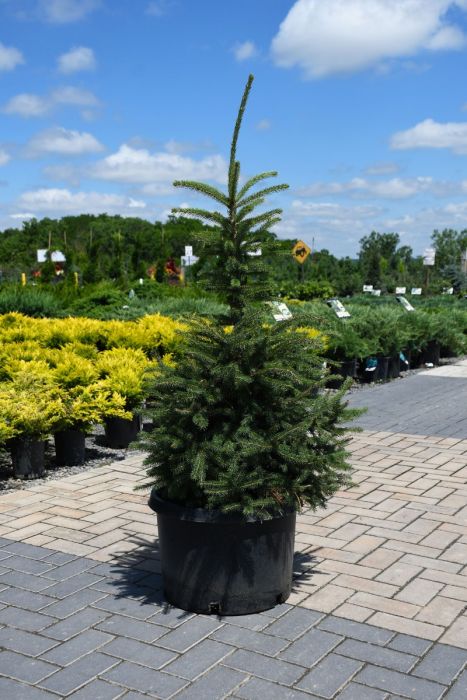Buying and Planting a Potted Tree
For the do-it-yourselfer, a great option is buying potted trees or “containerized” trees. Gertens offers tips and information on how to buy and plant a potted tree.



A spire-like evergreen, tall and stately with bluish-green needles, more densely branched and fuller than the species; very tough and adaptable, makes a wonderful vertical accent for the larger home landscape, ideal as a windbreak or in a shelterbelt
At Minnesota's Destination Garden Center, we offer a diverse range of trees to suit any landscaping need. Whether you're looking for shade trees to cool your home or ornamental trees to add beauty and interest, you'll find the perfect tree at Gertens. Our knowledgeable staff can help you select the right tree for your space and provide tips for care and maintenance. Visit Gertens today and explore the unmatched variety of trees to enhance your outdoor environment!
Height:40 feet
Spread:15 feet
Sunlight:![]()
Hardiness Zone:2b
Ornamental Features:
Black Hills Spruce has bluish-green foliage which emerges light green in spring. The needles remain bluish-green through the winter. Neither the flowers nor the fruit are ornamentally significant. The smooth gray bark adds an interesting dimension to the landscape.
Landscape Attributes:
Black Hills Spruce is a dense evergreen tree with a strong central leader and a distinctive and refined pyramidal form. Its relatively fine texture sets it apart from other landscape plants with less refined foliage.
This is a relatively low maintenance tree. When pruning is necessary, it is recommended to only trim back the new growth of the current season, other than to remove any dieback. It has no significant negative characteristics.
Black Hills Spruce is recommended for the following landscape applications;
Plant Characteristics:
Black Hills Spruce will grow to be about 40 feet tall at maturity, with a spread of 15 feet. It has a low canopy, and should not be planted underneath power lines. It grows at a slow rate, and under ideal conditions can be expected to live for 90 years or more.
This tree should only be grown in full sunlight. It is very adaptable to both dry and moist locations, and should do just fine under average home landscape conditions. It is considered to be drought-tolerant, and thus makes an ideal choice for xeriscaping or the moisture-conserving landscape. It is not particular as to soil type or pH, and is able to handle environmental salt. It is highly tolerant of urban pollution and will even thrive in inner city environments.
This is a selection of a native North American species.
| SKU | Container Size |
| E1506AP | #3 Container (3 Gallon) |
| E1510 | #5 Container (5 Gallon) |
| E1520 | #10 Container (10 Gallon) |
* Not all container sizes may be available at this time. See store for details on specific container size availability.
| Available for Pre-Order | Yes |
|---|---|
| Tree Type | Evergreen |
| Sun Preference | Full-Sun |
| Mature Height (Range) | 25 - 50 feet |
| USDA Hardiness Zone | 3, 4, 5, 6, 7 |
| Common Family Name | Spruce |